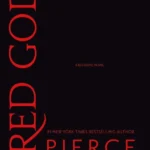The headline truth: Patterson writes like a showrunner
Think of Patterson less as a lone novelist and more as a showrunner: he maps the story beats, sets tone and pace, then works with trusted co-authors to deliver the first cut, revising until the voice snaps into place. The result is a steady stream of page-turners across multiple series without waiting years between installments.
Hungry For New Titles: Upcoming Book Releases
Step 1: the outline (where the magic starts)
Before a draft exists, Patterson writes a long outline – often dozens of pages – breaking the story into short, high-momentum chapters with cliffhanger pivots. It’s like a storyboard: character motives, reveals, and reversals plotted beat-by-beat. That outline is the spine that lets multiple books move forward in parallel without drifting off-brand.
Readers feel it because the chapters fly. Those end-of-chapter hooks you burn through at midnight? They were engineered upstream in the outline.
Why publishers love it: fewer production surprises, clearer series arcs, and reliable “if you liked this, you’ll like that” pathways.
Step 2: the draft (co-authors aren’t ghosts here)
With the outline in hand, a co-author often produces the first full draft. Patterson then rewrites and line-edits (sometimes multiple passes) to tune voice, pacing, and the “chapter-that-ends-too-soon” rhythm. The collaborator, be it Maxine Paetro or Tad Safran, gets cover credit – this is not hush-hush ghosting – and regular partners return because the system is clear: big story from Patterson, scene-by-scene craft from both.
Step 3: the brand (covers, cadence, and where to jump in)
Patterson’s teams treat every series like a recognizable brand: bold typography, consistent color cues, and titles that signal stakes fast. That means:
- Low friction entry points. You can start with Alex Cross anywhere, but new readers often try Along Came a Spider (start of Cross) or a recent “event” title to feel current.
- Multiple lanes. Adult thrillers (Cross, Women’s Murder Club, Michael Bennett), YA/middle-grade (Maximum Ride, Middle School), plus BookShots (short, blast-through-in-a-sitting reads) and nonfiction one-offs.
Why so many releases don’t all blur together
- Series architecture. Each universe has its own “promise”: Cross = psychological manhunt; Women’s Murder Club = friendship + crime-solving ensemble; Bennett = NYPD procedural with family stakes.
- Topical fuel. Collaborators bring fresh research and texture—tech, justice issues, new locales—so settings and cases feel different even when pacing stays familiar.
- Relentless pruning. Short chapters, few subplots that wander, and a bias for readability over ornament.
Why the system exploded into kid lit (and why it works)
Patterson founded JIMMY Patterson to publish page-turning children’s books—funny, accessible, “give me another!” reads like The Time Travel Twins series. The same showrunner playbook applies: brisk chapters, clean stakes, jokes that land, and covers kids actually pick up. It’s also part mission: get kids reading and keep them reading.
BookShots: the sprint format
Remember when everyone discovered they had time for a hundred and fifty pages? BookShots were built for that: compact thrillers and series side quests designed to be finished in an afternoon. They’re perfect “test drives” for a series—and great for commute reading or breaking a slump.
How many books, really—and how often?
Output varies year to year, but think a dozen-plus new Patterson-branded titles annually across adult, kids, and audio originals – some solo, many co-authored. That pace is sustainable because the bottlenecks move: when one book is in revisions, another is in draft, a third is in outline, and so on. Like a TV studio, different shows sit in different stages of production.
James Patterson Upcoming Book Releases Calendar
Where should a new reader start?
- Crime/thriller: Along Came a Spider (Alex Cross #1) or the latest Cross to be “current” immediately.
- Ensemble mystery: 1st to Die (Women’s Murder Club #1) for friendship + case-of-the-week energy.
- Procedural with heart: Step on a Crack (Michael Bennett #1).
- One-sitting test drive: any BookShots entry tied to a series you’re curious about.
- For teens/kids: Maximum Ride: The Angel Experiment or the Middle School series opener.
‘Superhuman’ Patterson
Patterson’s output looks superhuman until you see the assembly-line discipline behind it: long outlines, collaborative drafting, aggressive revision, consistent branding, and a publishing calendar that never idles. You don’t have to love every series – few readers do – but if you want reliably fast, cinematic reads, this machine was built for you.





